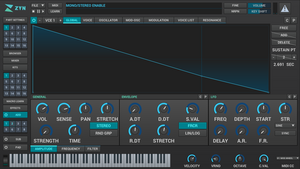네오칼라누스 크리스타투스
Neocalanus cristatus| 네오칼라누스 크리스타투스 | |
|---|---|
| 과학적 분류 | |
| 킹덤: | 애니멀리아 |
| 망울: | 절지동물 |
| 서브필럼: | 갑각류 |
| 클래스: | 헥사나우플리아 |
| 하위 클래스: | 코페포다 |
| 순서: | 칼라노이드과 |
| 패밀리: | 칼라니과 |
| 속: | 네오칼라누스 |
| 종: | N.크리스타투스 |
| 이항식 이름 | |
| 네오칼라누스 크리스타투스 (크뢰이어, 1848년) | |
| 동의어 | |
| |
네오칼라누스 크리스타투스는 주로 북태평양에서 발견되는 요각류의 일종이다.
설명
암컷의 길이는 보통 약 7.6에서 10.4 밀리미터(0.30에서 0.41인치)까지 다양하다.수컷의 길이는 보통 약 6.7에서 9.6 밀리미터(0.26에서 0.38인치)이다.[1]
분배
네오칼라누스 크리스타투스는 북태평양에서 발견되며 적은 수로 추크치 해와 북극해에서 발견된다.[2]그것은 칠레 앞바다에서도 기록되었다.[1]
생태학
수명주기 및 재생산
비록 N. Christatus는 일년 내내 번식하지만, 10월부터 12월까지의 생식 활동 면에서 절정을 이룬다.번식력은 깊이에서 발생한다; 스테이션 P에서, 성인들은 250미터(820피트) 이하의 깊이에서 번식한다.[3]홋카이도 동쪽 해안에서 떨어진 H사이트에서는 성인들이 500m(1,600ft) 이하의 깊이에서 번식한다.이곳의 성인들은 보통 약 500미터에서 1,500미터(1,600미터에서 4,900피트)의 깊이에 위치한다.[4]알을 낳은 후, 나우플라이는 표면으로 올라간다.이 상승기 동안 그들은 6단계 나우플라이 또는 1단계 복사물로 발전한다.[5]2 °C(36 °F)의 물이 있는 실험실의 연구에 따르면, 이 개발이 일어나기까지 약 40일이 걸린다.[6]나우플라이는 자라는 동안 그들의 큰 노른자를 먹어 치운다.[3]1단계부터 IV 복사물은 250m(820ft) 깊이에서 발견된다.[4]1년 중 1단계부터 IV 복사체는 열선으로부터 약 200~250m(660~820ft)까지 발견될 수 있으며,[7] 일부 지역에서는 표면 근처의 고온과 상관관계가 있다.1단계에서 V단계 코페포다이트로 발전하는데 약 4개월이 걸린다.스테이지 V 요각류는 7월과 8월에 수심 250m(820ft) 이하로 이동하다가 9월 이후 성인으로 부상하며 일사천리로 들어간다.전체적으로, N. Christatus의 수명은 다른 속과 마찬가지로 [4]연간이다.[8]
참조
- ^ a b Razouls C.; de Bovée F.; Kouwenberg J.; Desreumaux N. (2018). "Diversity and Geographic Distribution of Marine Planktonic Copepods". Sorbonne Université, CNRS. Retrieved 16 July 2018.
- ^ 생명의 백과사전의 "Necalanus Christatus"
- ^ a b Miller, Charles B.; Frost, Bruce W.; Batchelder, Harold P.; Clemons, Martha J.; Conway, Richard E. (1984). "Life histories of large, grazing copepods in a subarctic ocean gyre: Neocalanus plumchrus, Neocalanus cristatus, and Eucalanus bungii in the Northeast Pacific". Progress in Oceanography. 13 (2): 201–243. doi:10.1016/0079-6611(84)90009-0. ISSN 0079-6611.
- ^ a b c Kobari, T.; Ikeda, T. (1999). "Vertical distribution, population structure and life cycle of Neocalanus cristatus (Crustacea: Copepoda) in the Oyashio region, with notes on its regional variations". Marine Biology. 134 (4): 683–696. doi:10.1007/s002270050584. ISSN 0025-3162. S2CID 85038743.
- ^ Dagg, Michael (1993). "Sinking particles as a possible source of nutrition for the large calanoid copepod Neocalanus cristatus in the subarctic Pacific Ocean". Deep Sea Research Part I: Oceanographic Research Papers. 40 (7): 1431–1445. doi:10.1016/0967-0637(93)90121-I. ISSN 0967-0637.
- ^ Tsuda, Atsushi; Saito, Hiroaki; Kasai, Hiromi (2004). "Life histories of Eucalanus bungii and Neocalanus cristatus (Copepoda: Calanoida) in the western subarctic Pacific Ocean". Fisheries Oceanography. 13 (s1): 10–20. doi:10.1111/j.1365-2419.2004.00315.x. ISSN 1054-6006.
- ^ Tsuda, Atsushi; Saito, Hiroaki; Kasai, Hiromi; Nishioka, Jun; Nakatsuka, Takeshi (2015). "Vertical segregation and population structure of ontogenetically migrating copepods Neocalanus cristatus, N. flemingeri, N. plumchrus, and Eucalanus bungii during the ice-free season in the Sea of Okhotsk". Journal of Oceanography. 71 (3): 271–285. doi:10.1007/s10872-015-0287-3. ISSN 0916-8370. S2CID 133032694.
- ^ Conover, R. J. (1988). "Comparative life histories in the genera Calanus and Neocalanus in high latitudes of the Northern Hemisphere". Hydrobiologia. 167 (1): 127–142. doi:10.1007/BF00026299. ISSN 0018-8158. S2CID 30898474.


